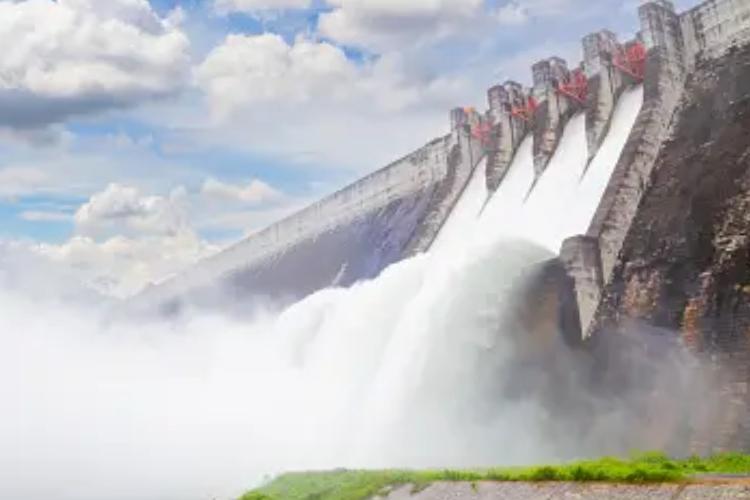Understanding how a flood control system works is of paramount importance in safeguarding communities and infrastructure from the devastating effects of flooding. Floods have been a natural occurrence since time immemorial, and societies have learned to adapt and develop mechanisms to mitigate their impact. Flood control systems are an integral part of this adaptation process, designed to manage and regulate the flow of water during extreme weather events, reducing the risk of property damage, loss of life, and economic disruption. These systems combine engineering, hydrology, and environmental science to create a multi-faceted approach to flood management. In this comprehensive exploration, we delve into the intricacies of flood control systems, from the basics of how they function to the various components that work together harmoniously to minimize the adverse effects of flooding on human lives and the environment.
Learning The Basics Of A Flood Control System
At its core, a flood control system is a network of structures, strategies, and technologies aimed at controlling and redirecting water flow to mitigate the impact of flooding. These systems operate based on the principle of water flow management, taking into consideration factors such as rainfall intensity, topography, soil type, and river capacity. The primary goal is to reduce the chances of water overflowing its natural confines and causing widespread destruction. Flood control system can be categorized into structural and non-structural measures. Structural measures involve physical constructions such as dams, levees, reservoirs, and channelization, while non-structural measures include floodplain zoning, early warning systems, and flood forecasting.
Investigating The Components Of Flood Control
A successful flood control system comprises several interrelated components that work in tandem to achieve effective flood management. One essential element is accurate hydrological data and flood risk assessments, which form the basis for designing appropriate flood control measures. Floodplain mapping is crucial in understanding areas prone to flooding, enabling communities to make informed decisions on land use and development. Flood control systems also incorporate natural solutions like wetland restoration and afforestation, which can help absorb excess water and slow down its movement during heavy rainfall events.
How Do Earthworks And Groundwater Monitoring Work With Flood Control?
Earthworks play a vital role in flood control by modifying the landscape to accommodate and redirect excess water. These earthworks can include building embankments, creating flood diversion channels, and constructing retention ponds to temporarily store floodwaters. Additionally, groundwater monitoring is a critical aspect of flood control, as it helps in understanding the groundwater levels and how they interact with surface water. By managing both surface water and groundwater, flood control systems can better regulate water flow and avoid potential disasters.
The Role Of Reservoirs, Dams, And Levees In Flood Control
Reservoirs and dams are significant components of flood control systems, offering storage capacity for excess water during heavy rainfall events. They help in reducing downstream flood risk by storing water and releasing it gradually over time. Levees, on the other hand, are artificial embankments constructed along riverbanks to contain and direct floodwaters away from populated areas. However, it’s essential to balance the benefits of these structures with potential ecological impacts and safety considerations.
Understanding Channelizing And Channel Stabilization Techniques
Channelizing involves modifying river channels to improve their capacity to carry water efficiently. This can include dredging, widening, and deepening channels. Channel stabilization techniques aim to prevent erosion and maintain the integrity of riverbanks and channels, reducing the risk of excessive sediment deposition and flooding. Proper channel management can have a significant impact on flood control and the long-term health of river ecosystems.
Appreciating The Role Of Flood Mapping And Early Warning Systems
Flood mapping is a crucial tool in flood control systems as it allows authorities to identify flood-prone areas and plan accordingly. Accurate and up-to-date flood maps help in determining flood risk levels and facilitate land-use planning and emergency response strategies. Early warning systems are also an indispensable part of flood control, providing timely alerts to residents and authorities about potential flooding, allowing for prompt evacuation and preparation.
Examining The Benefits Of Flood Control Systems
The benefits of flood control systems extend beyond protecting lives and property. These systems contribute to enhanced water resource management, reduced soil erosion, improved water quality, and increased agricultural productivity. These systems help replenish groundwater and recharge aquifers by managing floodwaters, ensuring a sustainable water supply during drier periods. Furthermore, flood control plays a significant role in reducing the economic burden caused by flood-related damages and losses.
Conclusion
Understanding how a flood control system works provides us with insights into the complexities involved in managing and mitigating the impacts of floods. Flood control systems are multifaceted, incorporating a wide range of strategies and technologies that address both structural and non-structural aspects of flood management. By harnessing the power of engineering, hydrology, and environmental science, these systems offer effective solutions for reducing flood risk and safeguarding communities and ecosystems. The benefits of flood control systems extend beyond immediate flood protection, encompassing improved water resource management, ecological restoration, and sustainable development. As we face an increasingly unpredictable climate, the importance of effective flood control systems becomes ever more critical to build resilient and adaptive communities.
